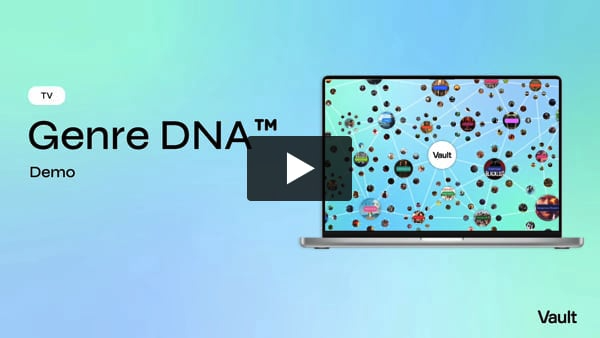Rapid Insights: ‘Dexter: Resurrection’ Shows Why a Strong Sequel Lifts Every Chapter of a Series

America’s favorite serial killer is back in Showtime’s newest entry in the mega-successful Dexter franchise. However, rather than a spin-off, this new show continues the very same story begun in the original Dexter, continued through the limited series Dexter: New Blood, and set up in the prequel Dexter: Original Sin. Dexter: Resurrection follows the popular antihero through New York City in pursuit of his missing son as the threat of his past finally starts to catch up.
Here’s what you need to know about Dexter: Resurrection:
Vault AI uses index scores to describe the impact a given story/theme/element will have on specific KPIs:
≤79 Disappointing 80-89 Challenging 90-109 Average 110-119 Promising 120+ Outstanding
Is the same Dexter audience tuning in for this new revival?
Yes and no. All four of the existing Dexter series show a roughly even gender split (for Resurrection: 47% men / 53% women) and heavily favor viewers 35+ (for Resurrection: 78%). However, the original series premiered back in 2006, meaning that fans watching the pilot live on Showtime are 19 years older now in 2025; thus, the 22% of the Resurrection audience that’s aged <35 today suggests that the franchise has picked up a considerable base of new and younger fans in the years since.
How important is the Dexter brand to the success of Resurrection?
Extremely. Resurrection picks up shortly after the finale events in the New Blood limited series, in which (spoiler alert!) the titular antihero was shot and seemingly killed. Fans of Dexter Morgan are undoubtedly flocking to this sequel to see how he survived and where his story will go next. The fact that Resurrection is an IP Extension (137) is its #1 overall viewership driver, and the storytelling tools that have become closely associated with the franchise (Dexter’s snarky Voice-Over Narration, 122; serial killer Murder Violence, 124; deeper themes around Father-Child Relationships, 125) are also crucial audience draws.
What’s setting this new Resurrection series apart?
Dexter’s arc. In Dexter, the character hid in plain sight as part of the Miami PD, maintaining a clean façade to hide his lethal extracurriculars; in New Blood, he hid out of sight in an isolated small town, avoiding anyone who might recognize him from the past. Now, in Resurrection, our favorite killer’s no longer quite so hidden, luridly embracing his antisocial Dark Passenger (Fish Out of Water, 122) in vibrant New York City (NYC Setting, 113), all while Being Hunted (120) by an old Miami coworker who finally knows what he’s capable of. The now-Captain Angel Batista–a mainstay of the original series–at last suspects Dexter of being the notorious Bay Harbor Butcher (Murder Suspect, 125) from all those years ago and is hot on his heels, injecting this series with a larger dose of Anticipation (118) and Terror (116) compared to its predecessors. These new pieces to Dexter’s journey are particularly boosting Resurrection’s ratings and potential longevity.
How is Resurrection’s social buzz?
Absolutely killing it. The late-May trailer spiked social chatter to the top of our buzz meter (at 160) for several days; online activity shot back up only a month later–an entire two weeks before the show’s premiere–and has stayed up there ever since, with no dips at all in the weeks between new episodes. And Resurrection’s rising tide has indeed lifted all boats, as the other shows in the Dexter canon have also seen major uplifts. Both the original Dexter and New Blood have been sitting steadily at (160) since late May, and Original Sin has been hovering in the “outstanding” buzz range since mid-July. Fans of the franchise are likely comparing and contrasting and discussing earlier plot points, given how intertwined the storylines are across all four series.
—
Most Popular Rapid Insights
Redefine your understanding of TV subgenres
Introducing Genre DNA™ – TV subgenres redefined by groundbreaking AI analysis to reveal the true drivers of viewership.
See the insights that others can’t
Genre DNA™ goes beyond traditional TV genre classifications by analyzing over 1,000 scripted and unscripted series on both linear and SVOD platforms from the last 5 years.
Each Vault Genre DNA™ report offers a precise analysis of your chosen TV subgenre, uncovering its unique drivers of viewership.
*Publicly released trailers for series are evaluated using Vault’s algorithms – utilizing our proprietary 120K+ story element database alongside viewership performance and other datasets – to identify unique combinations of stories, themes, characters, and genre elements that will drive success.
